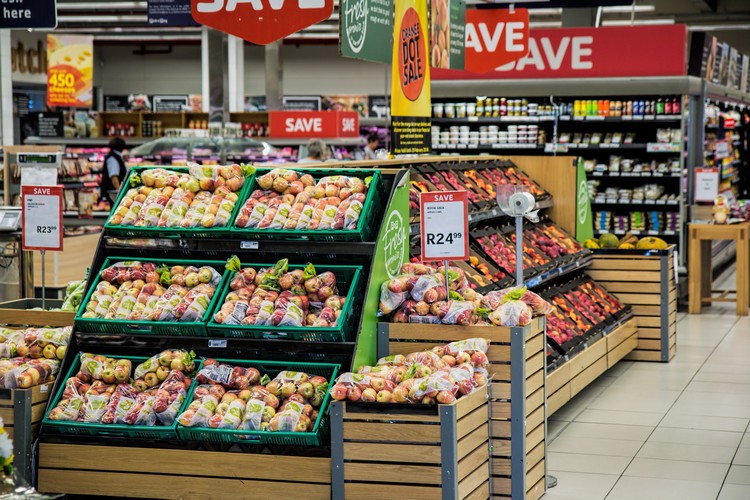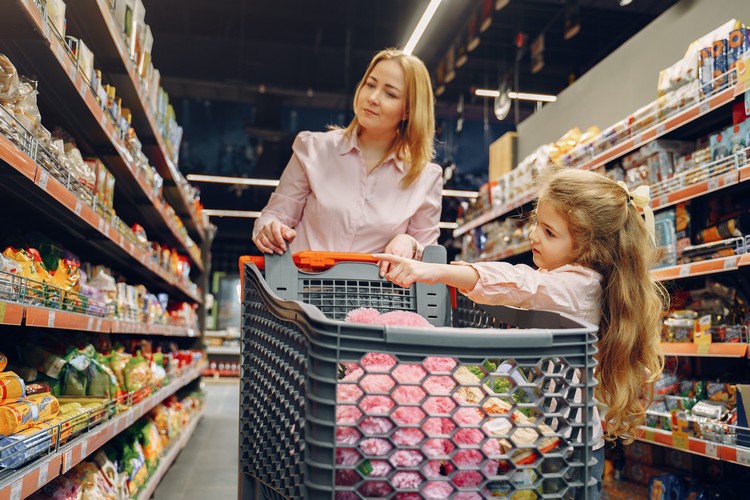Circular economy is all the rage - The indispensable flexible packaging lamination trend
2020 is not only the 50th anniversary of Earth Day, but also the first year of the official entry into force of The Paris Agreement. The earth still faces many challenges. How to protect the environment is currently the most urgent issue. Therefore, it is particularly important to call on the public to take comprehensive action to “do more for the earth”.

(▲Image Source: Pexels)
The American magazine “Times” once selected plastic as one of the 50 worst inventions of human beings. Plastic is a versatile material with lightweight, durable, high convenience and low price, so it has been used in numerous productions and almost occupied our life. Whether it is household goods, daily necessities, food and beverage or industrial supplies, it is almost inseparable from plastic. But because of its shortcomings that it cannot be naturally decomposed in the environment, up to 3/4 of the plastic waste is accumulated in the landfill, and more garbage is scattered on the land, sinking and floating in the depths of the ocean and the lake, causing serious environmental pollution.
The study pointed out that more than 260 million tons of plastic are used every year in the world. In the past 50 years, the global plastic production has increased more than 20 times, and will double in the next 20 years. We can imagine that in the near future, the mass production of plastic will be the main cause of climate change. For the next step, we must consider how to change the habit of plastic addiction.
The trend of plastic reduction is sweeping the world; more than 60 countries have announced their plastic reduction policies. Affected by the mainstream consciousness of pursuing sustainable development, the plastic industry will be highly integrated with the circular economy and emphasize the sustainability of resources, which has become a new trend of industrial development, especially the environmentally friendly plastic materials are the focus of future development. Many well-known enterprises have begun to take action, from the design, use, recycling to reuse of materials at the source, they are considering how to promote the circular economy and achieve a sustainable future.
In recent years, the international plastic processing and material technology has been innovated in many application fields, focusing on “green environmental protection, recycling, intensive innovation, intelligent design, safety and sustainability” projects with the circular economy as the developmental axis. These technological developments have created many high-value products and even deeply influenced our future lifestyle. Therefore, how to strike the balance between the convenience of using plastics and environmental protection has undoubtedly become a hot topic in the industrial development. The “New Plastic Economy: Rethinking the Future of Plastics” report pointed out that there are three principles for introducing circular economy into the global plastic packaging process solution:
-
Renewable:
Replace and reduce dependence on limited resources with renewable raw materials.
-
Recyclable:
Extend the life cycle of plastic products and materials as much as possible by recycling and reuse.
-
Decomposable:
ffectively avoids plastic waste into the natural environment to reduce the negative impact on the overall environment.
The main application of plastics is packaging products, and “how to eliminate toxic chemicals in packaging containers” will be another market opportunity for the industry to move towards a circular economy. Environmental Defense Fund (EDF, formerly known as Environmental Defense) once proposed that the harmful substances, such as plasticizers, which are widely used in plastic packaging containers, will not only cause harm to human health, but also pose a long-term threat to the environment if they continue to exist along with the packaging containers entering the circulation. Therefore, how to reduce the content of toxic chemicals is also an important development project of circular economy in the future.

(▲Image Source: Pexels)
The packaging forms are ever-changing. They not only attract the attention of consumers, but also provide protection, easy transportation and high durability for products. It is widely used in food, electronics, medical, daily necessities, home appliances and other purposes, and is an indispensable part of commodity circulation. Packaging can be categorized into plastic, metal, glass and cardboard based on the material used. The main application market focuses on flexible food packaging, accounting for about 60%. According to the Smithers Pira survey, the global packaging market reached US$851 billion in 2017 and continues to grow with the demand for food and logistics packaging, which is predicted to reach US$980 billion in 2022. The global packaging application market accounts for nearly 70% of beverages and food, followed by 20% of consumer products. The emphasis on resource sustainability and the rapid development of science and technology, the trend of packaging materials in the future will be green and sustainable, aiming at reduction of materials, recycle, lightweight, biomass decomposition and intelligent packaging.
As consumers pay attention to food safety, they also pay more attention to the food packaging chooses the correct material, such as requiring higher barrier, anticorrosive, antibacterial, and keeping freshness. It can be seen that how to use packaging technology to prevent food deterioration, keep the freshness of agricultural products and extend the shelf life of food, thereby improving the transportation safety of food, reducing food waste and avoiding environmental pollution will be the goal of the entire industry.

(▲Image Source: Pexels)
At present, sustainable packaging has swept the food and beverage industry, and this trend will continue to grow in the future. Many well-known food manufacturers are committed to creating 100% recyclable materials for the packaging of their products. Although the multi-layer structure of the flexible packaging can properly protect the contents and extend the shelf life of the food, it also challenges the recycling process of packaging, because of the adhesive used in the flexible packaging materials. Therefore, environmentally friendly and non-toxic solvent-free adhesive has become a key factor in the development of flexible packaging technology. Solvent-free adhesives for flexible packaging have attracted attention because they do not contain organic solvents. Not only the performance of the product can be the same as that of dry compounding but also protects the environment. In the future, they will become the main method of flexible packaging compound production.
In order to achieve sustainable development and consumer food safety, CPMC launched a new solvent-free adhesive for flexible packaging, providing a full range of solutions for general food packaging, high temperature retorting packaging and medical supplies packaging. The series of products includes general type, multi-function type, high temperature retorting type, suitable for various lamination structures, such as plastic and plastic lamination, metalized lamination, aluminum and plastic lamination, water boiled packaging, high temperature retorting packaging. All series of products can be used with solvent-free compound technology, it complies with the latest food contact packaging related regulations, and can completely replace the commercially available solvent-based products, breaking through the bottleneck of current fresh food packaging compound technology.
In addition, CPMC leads the industry in the exclusive introduction of special adhesives for food-grade high temperature retorting flexible packaging, which improves the problem of poor leveling of aluminum foil structure and poor surface appearance in the past, and can withstand the high temperature sterilization up to 135° C, while having excellent steam barrier properties, high peel strength retention rate, excellent friction coefficient of the compound film, no solvent used in the production process, no VOCs emission problems, reduce the harm to the environment, also can improve the life cycle of food and solve food safety problems.
Solvent-free Adhesives for Flexible Packaging
|
Item |
FA-825A/FA-225B |
FA-818AF/FA-218BF |
FA-876A/ FA-276B |
|
|
Type |
General type |
Multi-function type |
High temperature retorting type |
|
|
Solvent-free Adhesive |
100% Solid content |
100% Solid content |
100% Solid content |
|
|
Compound Structure |
|
|
|
|
|
Product Characteristics |
|
|
|
|
|
Product Applications |
General light food packaging |
General light food packaging, heavy packaging, electronic packaging, aluminum foil packaging (non-cooking), fresh food packaging (vegetables/meat products) |
General light food packaging, heavy packaging, electronic packaging, aluminum foil packaging (non-cooking), boiled packaging, cooking packaging (transparent/aluminum foil), fresh food packaging (vegetables/meat products), retorting packaging (retorting/ microwave/ food conditioning package) |
|
CPMC will continue to take environmentally friendly adhesive technology as the main axis and move towards 100% solvent-free and environmentally friendly products, increase the depth and breadth of precision materials, insist on providing high quality products, and bring more and added value to customers. For more product information, please feel free to 【contact us】 via E-mail or call.

